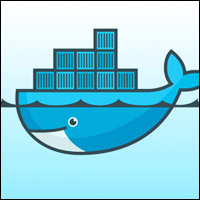
Docker on Monday announced Docker Engine 1.12 with built-in orchestration, which allows automated deployment and management of Dockerized distributed applications and microservices at scale in production.
Users can select Docker Swarm mode to turn on built-in orchestration, or they can use their own custom tooling or third-party orchestrators that run on Docker Engine.
Docker 1.12 is currently a release candidate. General availability is scheduled for July.
Docker 1.12 “represents Docker’s focus on continuing to build on its hugely successful container technology and to grab the mindshare back from other platforms like Kubernetes and Mesos, which have been generating a great deal of excitement in various parts of the ecosystem,” said Al Hilwa, a research program director at IDC.
“The next three years will see a number of orchestration platforms fighting hard for critical mass of adoption,” he told LinuxInsider.
Swarming Simplified
Docker 1.12 simplifies the process of creating swarms — groups of Docker Engines — through automated service discovery and a built-in distributed datastore. One command adds a Docker Engine and horizontally scales a swarm.
Docker’s new service deployment API describes all the resources and components to let users run and scale a service with one command. New API objects like Service and Node let the API deploy and manage apps on a swarm.
Docker orchestration includes an in-memory caching layer that maintains the state of the entire swarm, ensuring optimal scheduling performance even during peak times.
The system has built-in routing mesh technology for container-aware load balancing.
Docker Security
Docker 1.12 comes with mutually authenticated transport layer security, which automatically provides authentication, authorization and end-to-end encrypted communications among every node participating in a swarm.
When the first manager is started, Docker Engine generates a new Certification Authority and a set of initial certificates. New nodes automatically are issued a new certificate with a randomly generated ID and their current role in the swarm.
Every node constantly refreshes its certificates at user-configurable intervals as low as 30 minutes.
Alternatively, users can use their own certificate authority.
Competition and Coopetition
“This improves Docker’s position in the space, but Kubernetes has a strong ecosystem as well,” IDC’s Hilwa said.
Although Kubernetes, which was launched by Google, and Apache Mesos are strong competitors, “most of these environments will evolve to have similar features and capabilities over time and likely address the same general problems,” Hilwa suggested.
Red Hat views Docker and Kubernetes “as standards within the Linux container world, with the former as an image format standard and the latter as the standard for container orchestration,” said Joe Fernandes, senior director for OpenShift product management at Red Hat.
“This is reflected not only in our active involvement with the Open Container Initiative and Cloud Native Computing Foundation, but also in the fact that we have built our flagship container platform, Red Hat OpenShift, natively from these technologies,” he told LinuxInsider.
Red Hat on Monday launched the Ansible Container Project and offered Ansible Container as a technology preview.
Ansible Container lets users create Docker-formatted Linux containers within Ansible Playbooks with the need of external tools such as Dockerfile or docker-compose.
Ansible Container “will be able to accommodate multiple orchestration technologies based on community and customer need,” Todd Barr, Ansible general manager at Red Hat, told LinuxInsider. “Ultimately, the big idea here is use the same automation language to build containers and container apps as you use for the rest of your IT infrastructure.”




















































